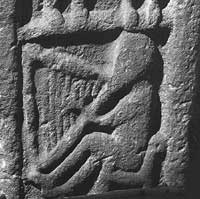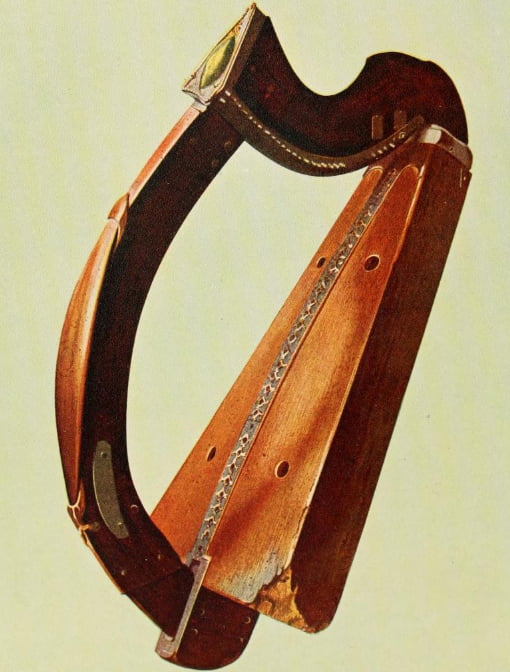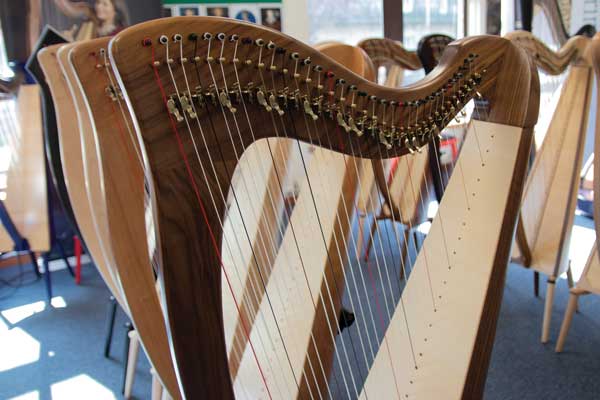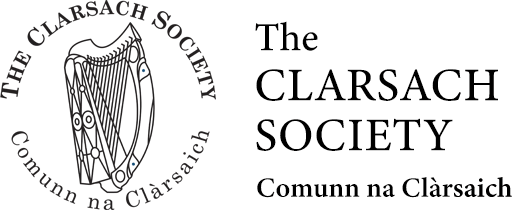What is a Clarsach?

What is a Clarsach?
The clarsach (Scottish Gaelic clàrsach) is Scotland’s oldest national instrument, having been played throughout the land from very earliest times. Long before the arrival of the bagpipe, it was the mainstay of Gaelic courtly music.

The earliest depictions of the instrument can be found on Pictish stones, dating back to the 8th century. It came in two different forms: the earlier Pictish harp, strung with gut or horsehair; and the Gaelic clàrsach, strung with wire.
The clarsach was the primary instrument of the Gaelic courts until the introduction of the bagpipe in the 15th century and remained central to Gaelic courtly music until the mid-18th century. It also played a key role in the music of the early Celtic church.
The Clarsach and Gaelic Culture

Harpers were a highly-trained class of professionals who spent years perfecting their art and were held in esteem second only to that of the filidh (or clan poet). This ancient tradition died out, however, following the failure of the Jacobite rebellion and the subsequent destruction of clan society and repression of Gaelic culture. The music was never written down by the harpers themselves and was, until recently, believed to be entirely lost.
There are references to harps and harpers in ballads and Gaelic poetry and song and the memory of the clarsach was kept alive, and often romanticised, by writers such as Sir Walter Scott.
The earliest surviving clarsachs are the 15th century Lamont Harp, and the better-preserved Queen Mary Harp, dating from around the turn of the 16th century. They can both be seen at the National Museum of Scotland, Edinburgh.
The National Mòd
In 1892, Lord Archibald Campbell founded the National Mòd (now the Royal National Mòd) to encourage and promote all things Gaelic. He commissioned instruments from J. and R. Glen, of Edinburgh and instituted a prize for the best singing with self-accompaniment on clarsach.
These instruments were based on the Queen Mary Harp; but, instead of wire, were strung with gut as were contemporary pedal harps. Thus the modern clarsach was born and slowly began to develop into the one widely used today.
In order to have quick access to a reasonable number of keys, or even change key during a song without re-tuning the harp, semitone blades were added. These resembled the blunt blade of a penknife, and were screwed into the neck of the harp, one beside each string. When turned at a right angle to lean at the correct place on the string, the string was shortened and so sounded a semitone higher. A complete set of blades gave players access to 8 major keys, as well as relative minors and modes, significantly widening the capabilities of the instrument. It also answers the commonly asked question: “Why, at least in Scotland and the UK, do we mostly tune clarsachs in the keys of E flat or A flat?”
Because the gut strung harp is played using the pads of the fingers, while wire players use the fingernails, the new instruments were larger in size; although, at least to begin with, had a similar number of strings.
Encouraged greatly by the founding and subsequent work of Comunn na Clàrsaich in 1931 at the close of the Dingwall Mòd, more makers in Scotland, UK and world-wide began manufacturing and developing the clarsach.
More information on early makers and photographs of their instruments can be found in Stuart Eydmann’s book In Good Hands, commissioned by The Clarsach Society.
The Lever Harp

The invention and development of excellent, accurate levers to replace the early blade system led to new and exciting musical possibilities and repertoire. The lever harp, as it is commonly called, is currently used in the music of many nations and in every style and genre as a solo instrument and in groups, ensembles and orchestras. The invention of the electro harp and good sound systems allows it to be an equal partner and leading instrument where once it was used mainly as accompaniment.
Once regarded by many pedal harpists as a stepping stone to a “proper” (pedal) harp, the clarsach is now recognised as a versatile instrument with its own unique characteristics, sound and repertoire.
’70s resurgence
In the 1970s, research began into the repertoire and technique of the original instrument by players and academics. Tunes stored in old lute, fiddle and pipe collections were traced back to the old harpers and scanning techniques revealed manufacturing methods. Reproductions of ancient instruments allowed us to hear the authentic sound.
Today, there are more clarsach players, teachers and performers than ever before. The clarsach is an instrument with a distinguished past, a vibrant present and an exciting future.
Further reading:
- In Good Hands by Stuart Eydmann (The Clarsach Society)
- Tree of Strings by Keith Sanger and Alison Kinnaird (Routledge)
- Harps and Harpists by Roslyn Rensch (Indiana University Press)
